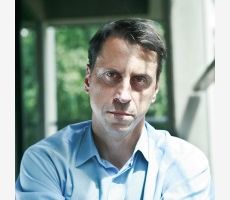
What for you is the architecture?
Architecture is a field of culture, and so it should be treated as such. It's not construction, by which it has been absorbed today. It is the use of space, in the broadest meaning of the concept - arranging the world to meet the needs of the people.
Jems Architekci company is creating projects for nearly 25 years. You have many office projects on your account. Have you observed any changes in the Polish office market durring this period?
The market has changed a lot. In the 90's the market was aggressive, everything was sold, and the central role played the financial parameters - not quality. Today, in a competitive market, investors have become more demanding, and began to pay more attention to the quality of the buildings.
Did the investors change?
Yes, for the better. Currently, the expectations are high and that makes us glad. Investors do not come to the studio only just to get a building permit and the necessary documentation. Their optimism in the time of boom was painfully verified by the market. Some projects have not been approved because, as it turned out, they did not meet the expectations, or did not meet the financial capabilities of potential customers. Ill-conceived buildings turned out to be costly for investors. Hence the reflection and caution on new topics. Investors now expect better projects - they carefully look at the designer's work, often have an impact on a very specific design solutions.
Often we can see the term "project designed to measure". How is it in your case?
Generally, office buildings we design are divided into two groups. The first is a commercial building for rent, and other objects which are to be corporate headquarters - are designed to measure, for a specific user. Office buildings belonging to the second group are quite different buildings, more difficult, because they are more personalized and tailored to the specific needs of a particular company. This was the case of Agora headquarters realized a few years ago. The investor's demand were determined primarily by the specifics of the business. - because the newspaper comes out everyday, they work for 24 hours a day.Therefore it is not surprising that here the environment was important for the investor, which was designed to guarantee the optimal conditions for the employees so they feel comfortable in the office. I think we were able to create such a friendly environment. Now, we have a similar situation with the Allegro office.
And what about public procurement?
Jems company is not participating in public tenders, where the main criterion is the price. However, we take part in architectural competitions. Several of the currently ongoing public facilities are a result of those competitions.
The architect is an artist, are the buildings designed by you properly "extraordinary?"
We treat all projects as "extraordinary" and each one have an individual approach. The man - a way of living, working, the performance of his needs - should always be in the foreground. We feel a great responsibility, because we, the architects, have a real impact on the quality of the space, and thus the quality of life. We set ourselves high standards, regardless of the size of the project and we aim to ensure that they achieve the goals the best way they can. It should be noted that it really depends on the investor - if you have the courage and enthusiasm, the project becomes more ambitious.
At this point in your account you already have several projects of sustainable buildings. What is your attitude towards green buildings and is there a difference in the design of such office?
Our studio, for many year, is designing buildings in which many technical solutions were at a very good level, so the trend of sustainable construction did not violated our way of working significantly. Even 7-8 years ago, a factor that affected the competitiveness was the quality, not the lease price, because the price became to be the same with all the developers. When it comes to technology, in the case of both, LEED and BREEAM, we implement solutions that are, if not identical, very similar. Issues related to the use of green areas, saving water, etc., which must be taken into account in sustainable building is important, but it is very good that they become a standard in the design.
What is your attitude to ecological certification?
If LEED and BREEAM systems affect the quality, they should be introduced. Skeptics will probably find cause for complaint. However, it should be stressed that all the requirements or limitations imposed on those responsible for the creation of buildings, although they often make the life harder, they finally raise the bar. As architects, we find of course, questionable issues during the design process. That is why you need to look at the certificate in a rational way, you can implement solutions that do not belong, e.g., due to location. The focus should be primarily on the functionality and efficiency of the object. A lot depends on the price you pay for the completion of a particular solution. If the implementation of a single point is too expensive, you just have to give it up, and focus on another instead. For example, the issue of recycling the materials of existing buildings. It is often so expensive element, that in our reality, it becomes unacceptable to investors.
Don't you think that certification is just marketing exercise?
Of course you can say that the certificates are only marketing exercise. In Anglo-Saxon countries, environmental issues, for a long time, are socially objectified and are a matter of priority, rather than marketing. In Poland, we just started the education on this topic. Environmental issues are not only a narrow field of ecological groups action, but they become larger problems. And if certification of buildings serve this cause, it is a very good thing.